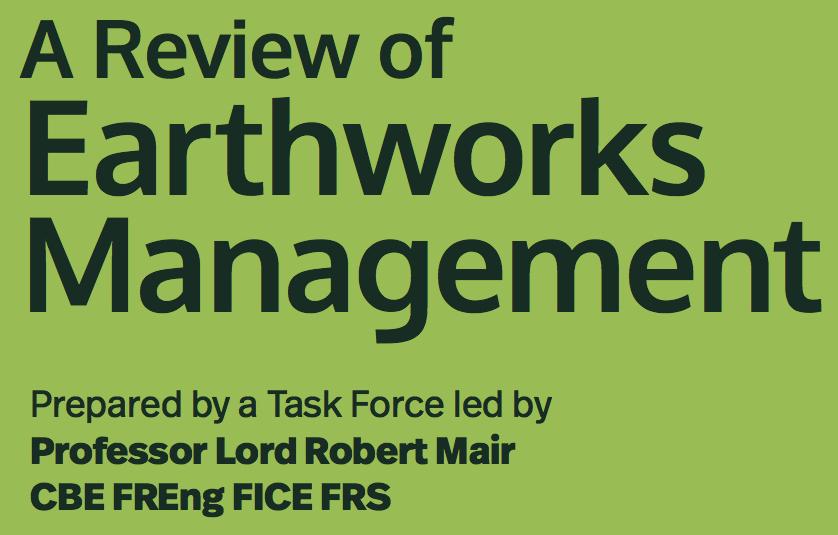
Submitted by L. Millard on Mon, 29/03/2021 - 13:15
Following the tragic events near Stonehaven on 12 August, when a train derailment led to three people losing their lives, the Earthworks Management Task Force, led by Professor Lord Robert Mair, Head of CSIC, has completed its report and recommendations.
The Secretary of State requested an assessment of the impact of extreme weather on the resilience and safe performance of our rail network and an initial report was provided in September last year. An update is now available, which includes the reports and recommendations from independent Task Forces led by renowned experts Lord Robert Mair and Dame Julia Slingo FRS, former Chief Scientist at the Met Office, who led the weather advisory report.
Titled ‘A Review of Earthworks Management’, the 543-page report brings focus to Network Rail’s capability and methodology for the management of railway cuttings and embankments, particularly in the light of climate change and “changing weather patterns including longer periods of prolonged rainfall, more intense rainfall and hotter, drier summers”.
Providing a detailed and comprehensive account of the factors affecting Network Rail’s portfolio, which comprises “190,000 earthworks assets, comprising 70,000 soil cuttings, 20,000 rock cuttings and 100,000 embankments. The vast majority are over 100 years old and many are over 150 years old”, the Review presents the soil mechanics of earthworks and considers current asset management strategies and processes: “A key challenge for Network Rail’s earthwork asset management is to focus on mitigating the effects of earthworks failures, as currently it is not reasonably practicable to detect nor prevent all earthwork failures. Mitigation measures are crucial to reduce the consequence of a failure should it occur.”
An overview of a range of monitoring technologies and systems includes consideration of remote sensing with wireless tiltmeters, acoustic sensing, helicopter and drone surveillance, InSAR, LiDAR and photogrammetry. This section also highlights the CSIC project at Hooley Cutting, near south London, on the London to Brighton Route through the North Downs where mesh to collect rockfalls has been instrumented with fibre optic cables to record changes in strain that can help to identify problematic areas before they impact on the safety of the railway. The Review states: “There is a need to adopt reliable methods of monitoring which can inform Network Rail engineers of the condition of the more critical geotechnical assets, and importantly, of any significant changes occurring. Network Rail recognise this need and have been impressive in investing significantly in R&D to investigate the potential for novel technologies.”
Identifying a lack of information “on pore water pressures and suctions in slopes and embankments and on their response to different rainfall and weather patterns”, the Review recommends an increase of investment in research and development: “The development of data analytics is also considered as a useful tool to manage a large and complex asset base and harnessing more value from existing data sets through smarter information.”
In conclusion the Review states: “We recommend that Network Rail build on their comprehensive asset management system and progressively adopt a broader and more integrated approach to the management of Earthworks, Drainage and Vegetation, taking account of changing weather patterns. There is a need to breakdown the historic silos between these interdependent assets across the organisation to support the delivery of a safe, cost-effective and sustainable railway infrastructure into the future.”
• Read ‘A Review of Earthworks Management’ prepared by a Task Force led by Professor Lord Robert Mair CBE FREng FICE FRS in full.
